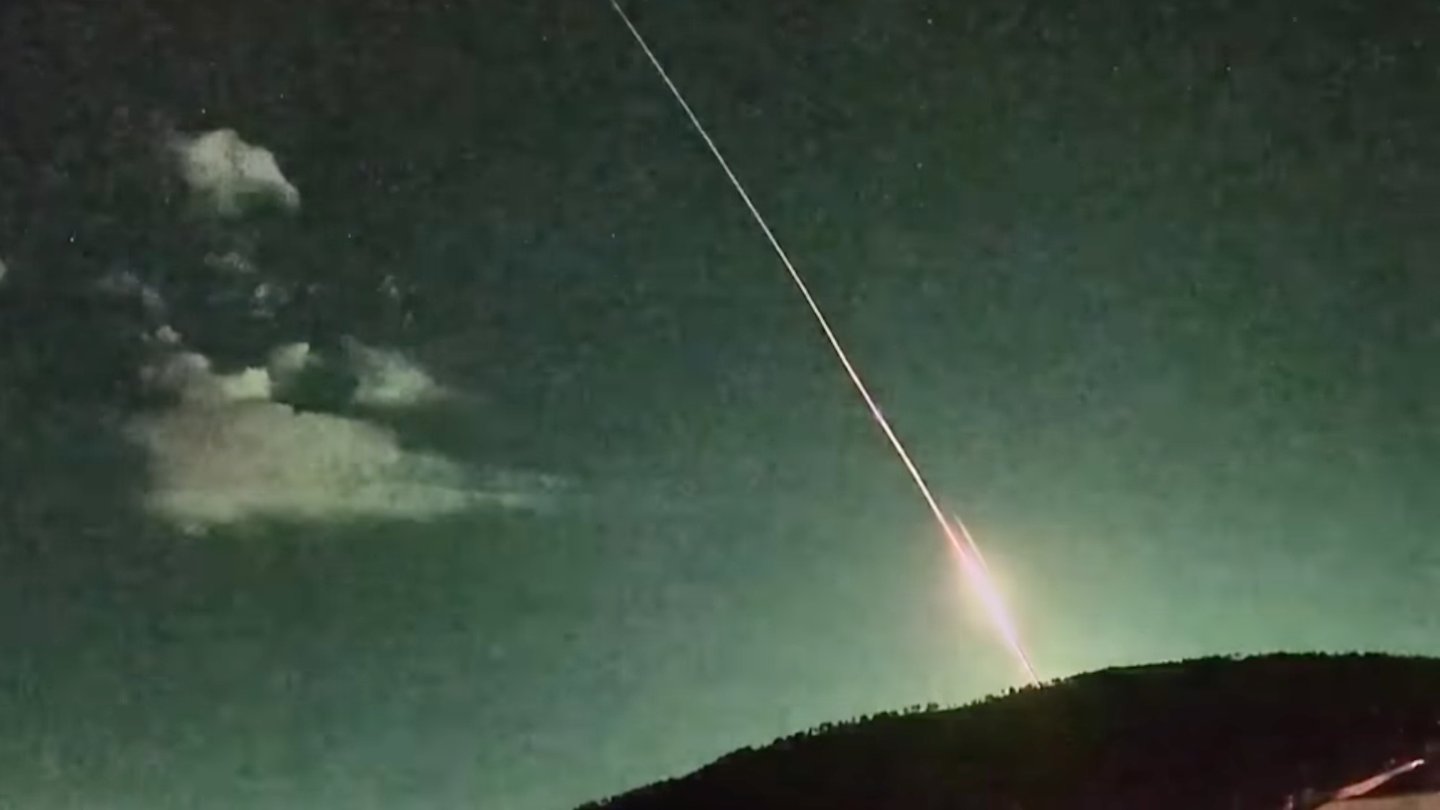

A meteor clocking in at 100,000 mph blazed across Spain and Portugal over the weekend, creating a fiery green, blue, and white light show in the process. Multiple videos posted across social media and news outlets show the object—later assessed by the European Space Agency to be a chunk of comet—entering the Earth’s atmosphere around 22:46 UTC (6:46 PM EST) on May 18 before breaking up approximately 37 miles above the Atlantic Ocean. According to Nova Portugal, the moment was witnessed by thousands of people, who shared their experiences online.

Further video analysis of the meteor’s colors indicated the presence of magnesium, which points to it potentially having been what’s known as a pallasite. These space objects feature dark green crystals made of a magnesium-iron silicate known as olivine. Some astronomers theorize pallasites may originate within an asteroid, between its core and mantle. If so, fragments could help researchers learn more about how planets like Earth first formed in the solar system.
JUST IN: Meteor spotted in the skies over Spain and Portugal.
— Collin Rugg (@CollinRugg) May 19, 2024
This is insane.
Early reports claim that the blue flash could be seen darting through the night sky for hundreds of kilometers.
At the moment, it has not been confirmed if it hit the Earth’s surface however some… pic.twitter.com/PNMs2CDkW9
Unfortunately, it’s somewhat likely much (if any) of Saturday’s sky show survived the descent. Astronomers estimate about 48.5 tons of space debris pummels Earth daily, 90-95 percent of which burns up entirely during atmospheric entry. While perhaps disappointing to scientists and meteorite hunters, it’s likely for the best. In 2013, a 55-foot-long meteor exploded over the Russian city of Chelyabinsk with a force equivalent to 440,000 tons of TNT. The resulting shockwave 14 miles above the ground damaged buildings within 200 square-miles of the blast and reportedly injured over 1,600 people. Luckily, such dramatic finales are extremely rare. Most meteor material that manages to survive the intense, friction-generated heat arrives on Earth as dust or extremely small meteorites.
[Related: Mars might have an asteroid problem.]
Even so, numerous organizations around the world are working to keep an eye on any potential problem asteroids and comets. NASA’s Center for Near Earth Object Studies at its Jet Propulsion Laboratory, for example, is tasked with identifying and tracking all such cosmic bodies, as well as providing “comprehensive impact hazard assessments in support of the agency’s Planetary Defense Coordination Office at NASA Headquarters in Washington.” But “near-Earth” is somewhat relative, given the vast distances of space—NASA defines the term as asteroids and comets with orbits that bring them within 120 million miles of the sun.
Instead of the potential problems millions of miles away, however, it’s statistically more important to make sure all that human-made space debris orbiting Earth remains in check. The fewer bits of SpaceX and satellite junk that inadvertently fall through the atmosphere and land in farmers’ fields, the better.